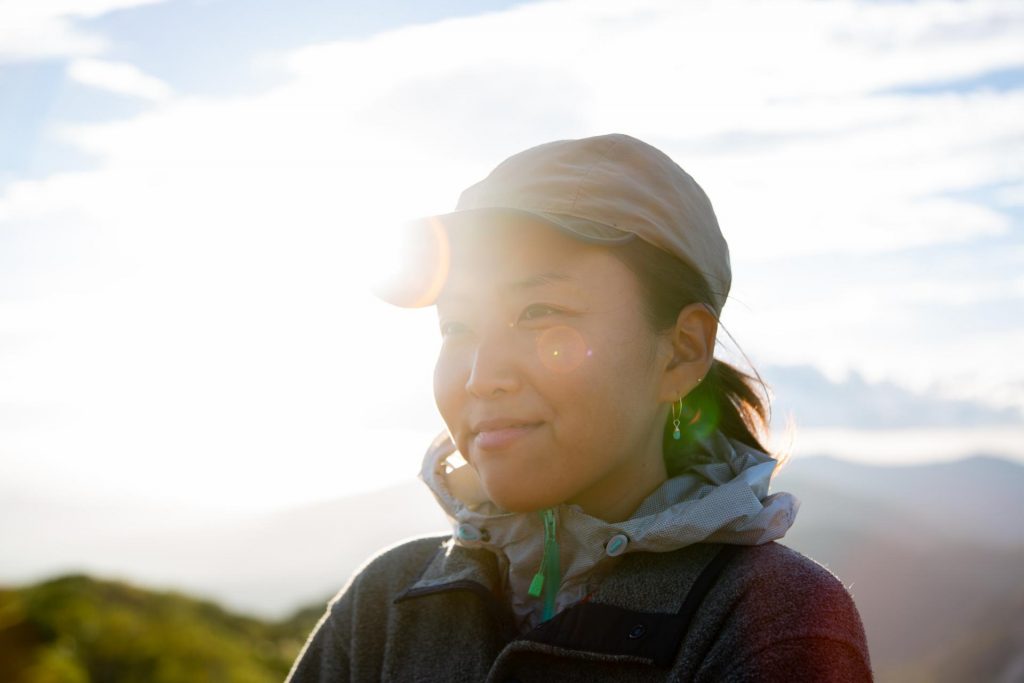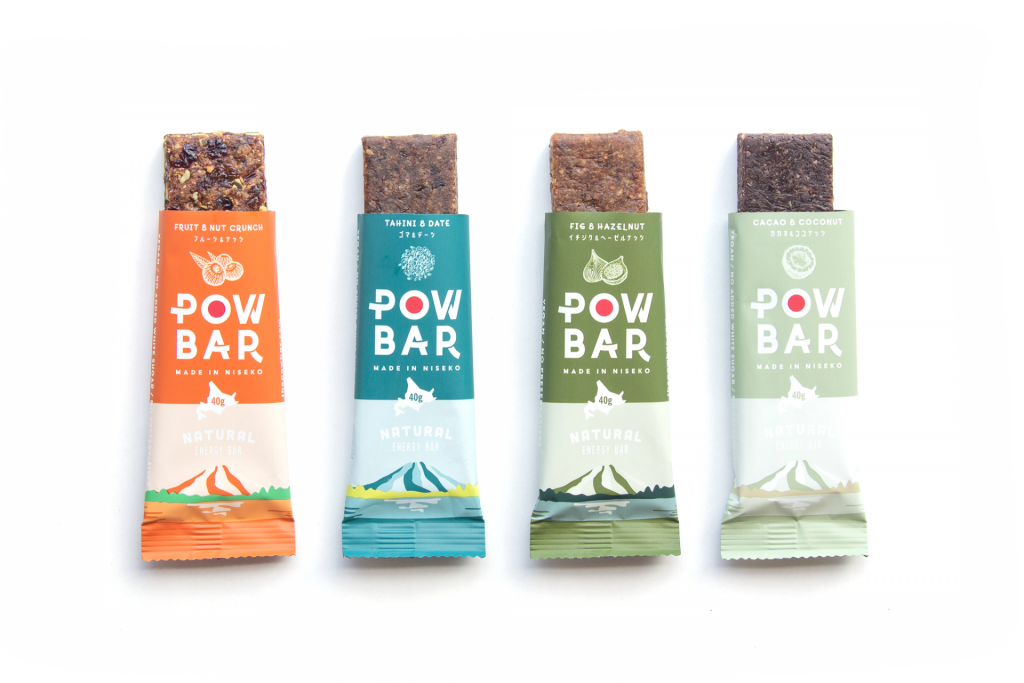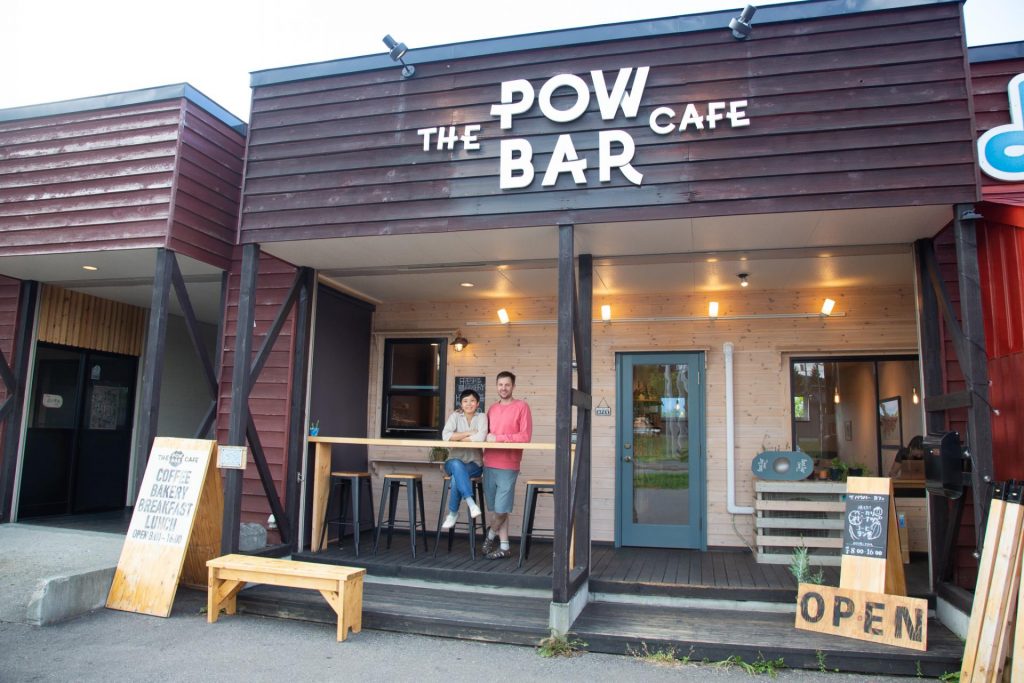Pow Bar Founder Megumi Scott

Growing up in Koshimizu, near the Shiretoko Peninsula in Eastern Hokkaido, Megumi Scott spent a lot of time outdoors hiking and camping with her parents and older brothers. As she became more serious about hiking, she started taking notes about her trail mixes, nutrition and the effects they had on her body. This was the beginning of her journey to test the limits of “fuel for movement.”
She noticed a lot of foreign and domestic energy bars had too much sugar and processed foods, including dairy products. Combining her passion for the outdoors, literature and healthy food—and with help from Sam’s Bike Shop in Sapporo and their licensed kitchen—she set out to create a healthier alternative.
Brad Bennett: When did you discover your passion for food and the outdoors?
Megumi Scott: I was led to this path early. My father loves the mountains and from a young age we would spend weekends hiking and camping in Hokkaido’s mountains. My mother loves cooking and baking and by age six, I was helping her in the kitchen. She said I would sneak into the kitchen and try to make things on my own.
BB: And this continued as you got older?
MS: Yes, when I was young I could remember everything about any children’s book that had food in it. I studied Japanese literature at university and I kept getting drawn to books that mentioned food. I started searching out old books that referenced food and diets. In my fourth year, I wrote my final paper on traditional Japanese diets and foods. My professor was surprised by the topic I researched, but I passed.
BB: Did this lead to work in food or nutrition?
MS: No, after university I worked for an outdoor company. There was a strong mountain culture and the staff were pros. When I first began hiking with these serious mountain people I was very tired and it was difficult to keep up. I wanted to increase my skills and knowledge of the mountains so I could enjoy it more and be better at my job.
I set a goal to do a multi-day solo hike, focusing first on my gear and cutting weight with more technical (and expensive) equipment. After spending a lot of money on better, and lighter gear, I still wasn’t satisfied. Then I started thinking about my body, noticing how I was breathing while pushing hard. How was my body feeling? How did I feel after eating different foods—a rush of energy then a crash, even balanced energy? Was my stomach upset?
BB: Searching for the perfect “fuel for movement.”
MS: Yes, while I was thinking about how food affects performance while being active, I remembered a story from 150 years ago. The Japanese government invited a German doctor to Nikko in Tochigi Prefecture. On his first trip from Tokyo he was taken by horse-drawn carriage. The horses needed to be changed six times during the journey. The second trip, he was carried by messengers who traveled fourteen hours over mountain passes without stopping. He noticed they were only eating brown rice onigiri, sour plum, pickles—simple, whole food diets.
He was amazed, but thought they could be even stronger if they ate meat. He asked if he could experiment with their diet. Once he introduced meat into their diet, they could no longer travel the same distance, so they changed back to their normal diet. I thought about the Japanese diet today compared to this simple diet of the past. We have so many choices, many with additives to help my performance. But, are they better than the simple, natural foods?
I started to test my body during hiking. What foods worked for long distances? Could I strip away unnecessary foods? I noticed I felt bad when I ate most energy foods available from outdoor shops (gels, energy bars, powders etc.) or sweets and normal snacks at the combini.
BB: The beginning of the Pow Bar journey?
MS: Yes, I continued to study food, and learned about sugar balance in the blood. You also need good minerals and nutritional balance to perform well. I began looking at natural ingredients and noticed they naturally have this balance. You don’t need to add anything to get it.
I began eating only natural products, like nuts, dried fruits and kombu while hiking. I started feeling great; I didn’t get tired so easily and felt both mentally and physically more energized. At the same time my energy levels felt more stable and balanced, instead of having a big energy boost, then crashing.
I also changed from sports drinks to water. If I eat weird and unnatural ingredients, I can sometimes get a quick boost, but afterwards my body must work hard to digest and break down these things. Once I noticed my body ran more efficiently with these natural ingredients, I started to test and refine the best combinations and ratios of these ingredients for hiking, while aiming for something convenient and easy to carry in the mountains.

BB: What were you looking for?
MS: I wanted to create a bar made with natural and vegan ingredients, something professional athletes would use—if pros would can eat it, then everyone would, I thought. I wanted it to be easy to chew and swallow while working hard (something that wouldn’t stick in your mouth and teeth or make my jaw hurt from chewing too much). And I didn’t want the bar to melt or get too sticky in summer or freeze and become hard in the winter.
BB: Was it difficult to find the right combination?
MS: First, I tried trail mixes with dried fruits and nuts. This worked much better than other mountain food available, but, to make it easier to digest, I tried grinding all the ingredients together to make a bar. This was better to chew and swallow while exercising, and also easier on your stomach. After making several flavors that performed well and tasted great, I began shaping them into bar sized portions so they were convenient to take into the mountains.
BB: How were those initial Pow Bars received?
MS: Friends and acquaintances started asking for the bars and then some small specialized outdoor shops. Since then, we have been steadily growing, and hope to help many people find easily accessible energy food that is good for their body.
BB: What flavors are available for people wanting to try Pow Bars?
MS: We developed four flavors, each distinct in taste to keep your mouth interested depending on your mood, season or preference.
I’m very sensitive to how I feel while eating food, so Pow Bar flavors and packaging correlate to seasonal feelings while out in nature. Fruit & Nut crunch is like a sunset or sunrise in the mountains. Cacao & Coconut feels like a blanket of snow over the mountains—the rich chocolate taste is nice in winter. Tahini & Date is a fresh river in spring and blue sky in the mountains. Fig & Hazelnut feels like a lush green forest in summer (moss, ferns, trees).
BB: What’s next?
MS: Our goal for the future is helping educate people about what they eat, how it affects their performance and how they feel. We would also like to be a path towards positive social change—natural ingredients that are ethically sourced, sustainable packaging (using less plastic) and an environmentally conscious manufacturing process.

The Pow Bar Cafe opened in Niseko Town in 2019, serving up tasty and wholesome food, using only the best natural ingredients. If you’d like to try Pow Bars, visit their website or look for them at your favorite outdoor shop or heath food store.
Address: 77-16 Aza Motomachi, Niseko-machi, Abuta-gun, Hokkaido 048-1511
Phone: (0136) 55-6739
E-mail: info@thepowbar.com
IG/FB: @thepowbar
Pow Bar Founder Megumi Scott





